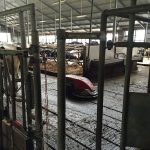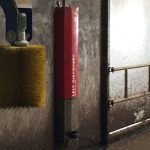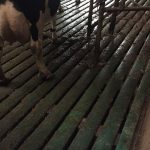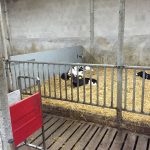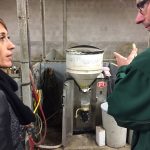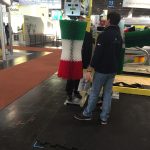Cows and Crops: Happy Cows, Happy Extension Educator!
By Rick Kersbergen, Extension Professor, University of Maine Cooperative Extension, richard.kersbergen@maine.edu
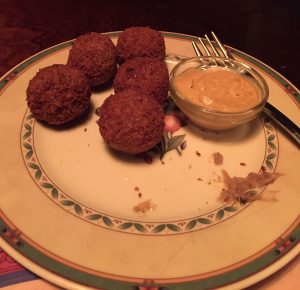
There is nothing comparable to experiencing some comfort food from your childhood. I was able to do that recently when I visited the Netherlands and saw “krokettn” and “bitterballen” on the restaurant menu. Both of these delicacies are the same, except for their shape and size — kroketten are larger cylinder shaped, and bitterballen are round. I ordered them several times during my 3-week stay! My mother and father would painstakingly make these delicious treats at Christmas as treats before dinner. I usually ate so many of them, I had no room for dinner — but I was quite content.
When I visit dairy farms, I always try and make an appraisal of how content and “happy” the cows are in herd. How cows react to people or distractions are good indicators of how they are treated and their level of contentment. The higher the percentage of cows that are lying down (chewing their cud) or at the feed bunk eating is an indicator is comfort.
Dutch farmers have invested heavily in the recent past to upgrade their facilities and barn infrastructure. Some of the upgrades have been due to incentives by the government to reduce ammonia emissions from manure. Most of these new barns have slatted floors with manure storage under the cows. The specially designed slatted floors are to reduce ammonia coming off the manure. Some of these floors even have padded rubber coverings for cow comfort.
To aid in getting the manure to drop through the slots into the manure storage, farmers have small robots that travel throughout the barn. These robots have scrapers in front and some even have water to spray the manure so it cleans the floors better. Manure never builds up in the alleys, and cows feet and tails stay extremely clean. The cows are never “pushed” by humans from one alley to another to clean the barn, so when you walk through these barns, the cows are never running away from you…and even block your way sometimes!
The other reason the cows are usually not “pushed’ is that nearly half of the nearly 19,000 dairy farms in the Netherlands use robots for milking. Nearly 90% of the farms I visited were robotic milking farms. Cows are free to go through the robot at any time and are incentivized to “get milked” by a small amount of grain they are given while in the robot. Several times, I saw cows repeatedly visiting the robot to try and get more grain. If they have been milked more than 3 times or have been fed their complete allotment, the robot kicks them out! The average number of milkings per day ranges from about 2.5 to 2.7 times.
Young calves are not immune from robotic management! Young calves are fitted with electronic collars and are free to go to the robotic “milk dispenser” that has ben programmed to provide her the appropriate amount of freshly prepared milk replacer. When you walk into these calf barns, the calves are quiet and content. Many farmers noted that calves that are raised in this manner adjust quickly to the robot milking when they first enter the milking string.
Finally, who doesn’t like a good back massage or scratch? Every barn had several of the automatic back rubbers that cows can walk up to and get “scratched.” When I visited the Eurotier (Europe’s biggest livestock show) in Hanover Germany, I saw companies selling these brushes, and even marketing them using the country’s colors! Cow comfort means happy cows…and hopefully happy farmers.
More from the Eurotier in my next blog…
- Robotic alley scraper with automatic “filling” station for water
- Robotic alley scraper with automatic “filling” station for water
- Low ammonia emission slatted floor
- Calves with programmable calf feeder (in red)
- Programmable calf feeder
- Dutch, German, and Italian cow brushes

